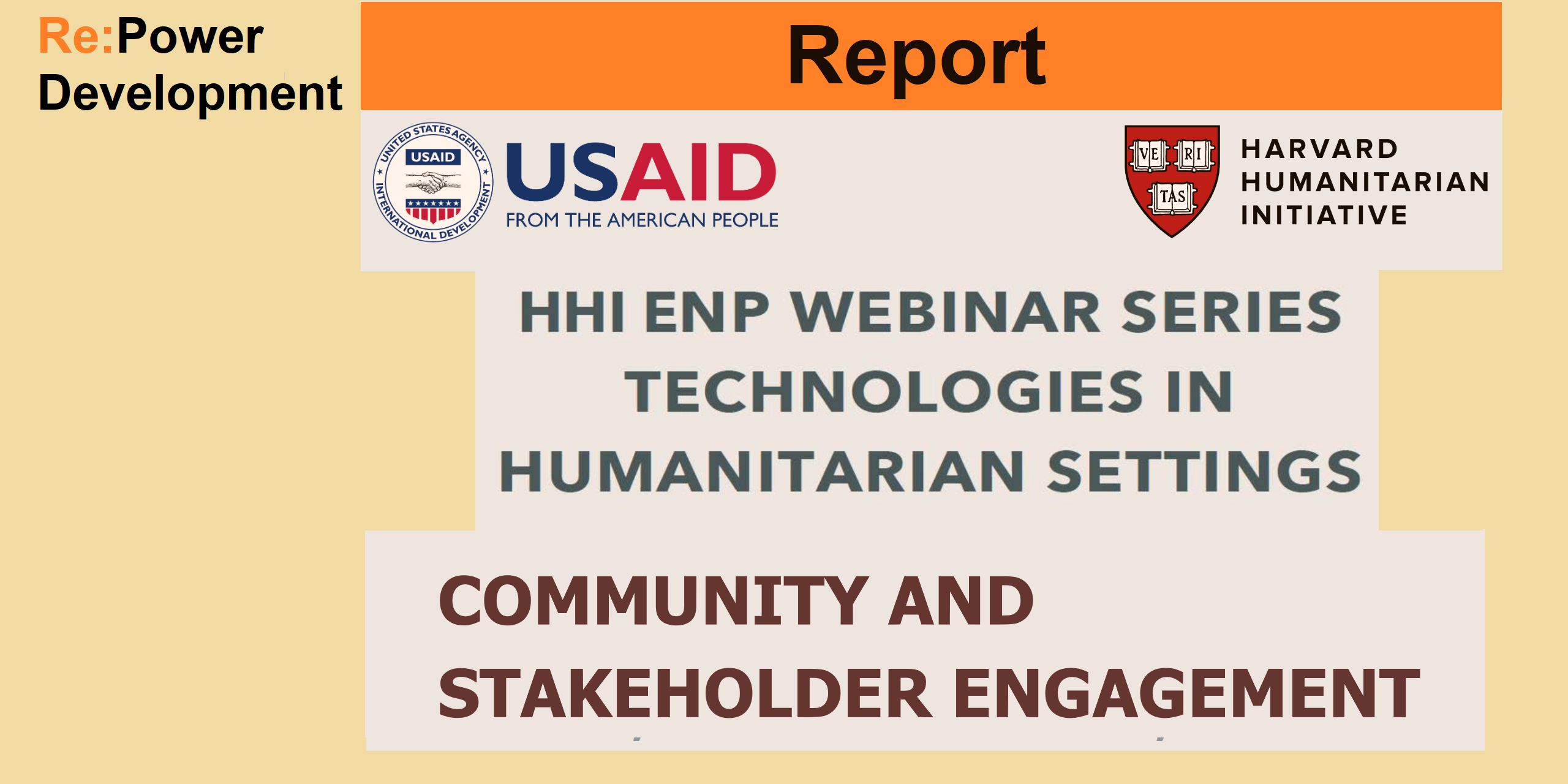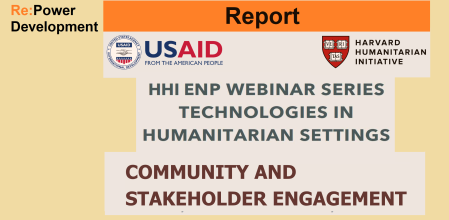
Logos & Webinar titles, Source: https://hhi.harvard.edu/files/humanitarianinitiative/files/01_flyer_meaningfulengagement.pdf?m=1665167628
Hello Dear Reader(s),
Welcome back! This post is about the webinar, Technologies in Humanitarian Settings: Community and Stakeholder Engagement, which I participated in last week on Tuesday and very much enjoyed.
If you are following us on social media, you might have seen the announcements yesterday and on Monday last week. The HHI, the Harvard Humanitarian Initiative, currently offers a series of four webinars about Technologies in Humanitarian Settings.
If you have thoughts and opinions to share after you have finished reading my post, I’ll be happy to meet you in the comments (find the comment box at the bottom).
On to the heart of this post.
The panelists of the webinar were Laura Frost (a partner at global health insights), Cleopa Otieno (the CEO of Kenya flying labs) and Safia Verjee (the Regional Innovation Advisor of CARE Denmark, responsible for East Africa). The moderator, Safia Khan, is also one of two editors of the case studies belonging to the series.
In under an hour, the three panelists gave us viewers a good idea of how to improve community (and stakeholder) engagement and also the largely systemic reasons why it is at times difficult.
The community here is the boss, and we need to be able to understand, then support what they do by using technology.
– Cleopa Otieno
The main points:
At the foundation of this needs to be a clear shared definition of what meaningful community engagement is, to be able to work towards achieving it. Community engagement should also be: Collaborative, participatory, transparent and consistent.
Language: According to all three panelists, this is a crucial point. Much content is still English based. Many locals in the target communities don’t speak English, so material to inform communities about the project in the first place, such as posters etc., should be made and translated to local dialects to reach more people directly.
Feedback-loops: There is a common occurrence that feedback might only be collected once, e.g. over the span of a four-year project and the people within the target communities, who provided the feedback, never hear back about it and often nothing is done with it, which causes frustration and mistrust. Feedback needs to be collected periodically, listened to and the communities need to learn how their input was implemented in practice. This includes feedback and efficient communication between different departments of the project itself.
Become culturally literate and get to know the community: Who needs to be reached? What works for the specific community (that may be hostile or in a warzone)? Often face to face meetings are preferable (e.g. once a week or a fortnight to get and give updates). Frost mentioned that oftentimes the same type of people will be invited to project meetings out of habit. Learn to read the structure of the community, i.e. who is in charge of which part of the community and who needs to be engaged to enhance the response and participation of the community as a whole (elders, leaders of women and youth groups etc.). What resources (e.g. buildings, abilities of community members) does the community offer? What have they done so far to address the problem themselves? The goal is to build relationships and create partnerships. Creating that now forms the foundation for future involvement.
Listen and learn: The project is for the community, so the community should be involved in the programming of any technology from the get-go. The community needs the opportunity and safe space to voice ‘desires’ (not solely ‘needs’) and contribute at the planning stage. Pay attention, take notes, write as much as you can and get a translator. Otieno points out that indigenous knowledge is the value here, technology is only meant to become an extension of it, a tool to add more convenience.
Be inclusive: Verjee stresses that people with disabilities are often overlooked at the planning stage, especially in rural areas. Inclusion starts at the venue of any meetings (is it accessible to everyone) and also means to identify and resolve barriers to use ICTs and other technologies.
Proper planning and budgeting: feedback-loops and other effective and necessary steps for community engagement need to be accounted for at the planning stage and built into the framework of a given program to begin with or there will neither be enough time nor funding for it.
Often the solutions are really catered to what the donor is willing to fund.
– Safia Verjee
Significant factors with a negative impact:
see everything mentioned above
the digital divide – e.g. many don’t have IDs to register for messenger services, which partially disqualifies them for use during disaster response, also varying ability and access to use technologies
mistrust – e.g. Otieno’s company works with drones, which are especially helpful during disasters and have saved many lives, but communities understandably mistrust the technology from experience, e.g. if the community is not properly involved in the project and has no say and thus will not participate
built in top-down structures which often happens out of habit and apparently convenence, e.g. when actions are required quickly, because of impending disasters, or when the funding and therefore scope of action is very limited etc. This is counterproductive to the bottom-up approach, which is central to achieving proper community engagement according to Frost, Otieno and Verjee.
So what do you think? I’m really interested in thoughts, opinions and experiences.
Are you interested in the other webinars of the series? Then follow this LINK for more information. They will be held on four Tuesdays on October 11th, 18th (today), 25th and the last one on November 1st. They are about a connected series of yet unpublished case studies, which the HHI funds. You have to register, but there is no fee.
I’ll be back with my longest and last contribution to this project during the first week of November. Until then, have a good time with the exciting posts yet to come. See you!

